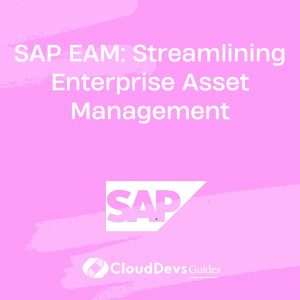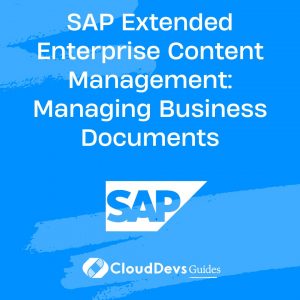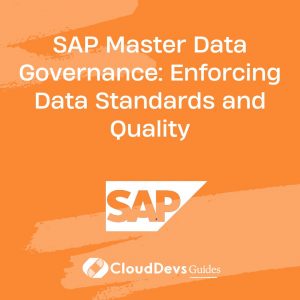SAP EAM: Streamlining Enterprise Asset Management
Enterprise Asset Management (EAM) plays a critical role in ensuring that an organization’s assets are effectively managed throughout their lifecycle. SAP EAM offers a robust framework for managing assets, improving operational efficiency, and reducing costs. This article explores how SAP EAM can be leveraged to streamline asset management processes and provides practical insights into optimizing asset performance.
Understanding Enterprise Asset Management (EAM)
Enterprise Asset Management involves the processes and systems used to manage an organization’s physical assets. Effective EAM helps organizations maintain asset reliability, optimize performance, and reduce operational costs.
Leveraging SAP EAM for Asset Management
SAP EAM provides a comprehensive suite of tools and functionalities designed to enhance asset management across various industries. Below are key aspects and practical examples demonstrating how SAP EAM can be utilized for efficient asset management.
1. Asset Lifecycle Management
SAP EAM supports the entire lifecycle of assets, from acquisition to disposal. This includes tracking asset performance, managing maintenance schedules, and ensuring compliance.
Example: Managing Asset Maintenance
Utilize SAP’s maintenance planning functionalities to schedule and track maintenance activities, ensuring that assets remain operational and efficient.
- Create a maintenance plan in SAP EAM.
- Define maintenance tasks and schedules.
- Monitor maintenance execution and performance.
- Review and adjust maintenance plans as needed.
2. Predictive Maintenance
Predictive maintenance leverages data analytics to predict potential asset failures before they occur. SAP EAM integrates with IoT sensors and data analytics tools to provide predictive insights.
Example: Implementing Predictive Maintenance
Integrate IoT data with SAP EAM to monitor asset conditions and predict maintenance needs based on real-time data.
- Connect IoT sensors to SAP EAM.
- Analyze sensor data to identify potential issues.
- Generate maintenance alerts based on predictive analytics.
- Schedule proactive maintenance activities.
3. Asset Performance Monitoring
Continuous monitoring of asset performance is essential for optimizing operations. SAP EAM provides dashboards and reporting tools to track asset performance metrics.
Example: Creating Performance Dashboards
Use SAP EAM’s reporting tools to create dashboards that display key performance indicators (KPIs) for assets.
- Define KPIs relevant to asset performance.
- Configure SAP EAM reports to capture KPI data.
- Create visual dashboards to display performance metrics.
- Use insights to make informed decisions on asset management.
4. Integrating with Other SAP Modules
SAP EAM seamlessly integrates with other SAP modules such as SAP S/4HANA, SAP PM, and SAP Analytics Cloud. This integration enhances data consistency and operational efficiency.
Example: Integrating EAM with SAP S/4HANA
Link SAP EAM with SAP S/4HANA to streamline asset management processes and improve data accuracy.
- Configure integration settings between SAP EAM and SAP S/4HANA.
- Synchronize asset data across both systems.
- Utilize integrated data for comprehensive asset management.
- Monitor and manage assets using integrated insights.
Conclusion
SAP EAM offers a powerful set of tools and functionalities for managing enterprise assets effectively. By leveraging SAP EAM’s capabilities, organizations can optimize asset performance, enhance operational efficiency, and reduce costs. Implementing these practices will lead to more effective asset management and a stronger operational framework.
Further Reading:
Table of Contents









